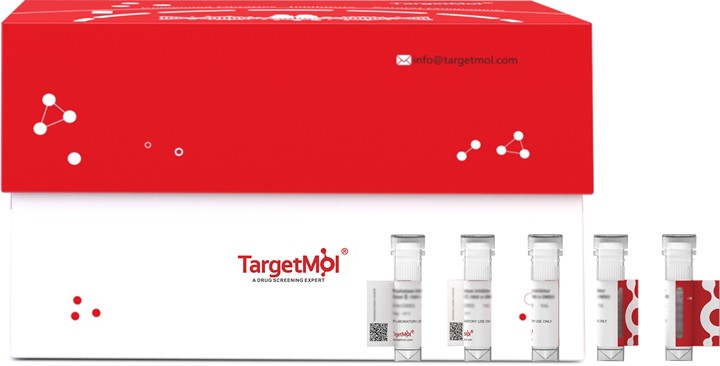Shopping Cart
- Remove All
 Your shopping cart is currently empty
Your shopping cart is currently empty

PLOD3 Protein, Human, Recombinant (His) is expressed in HEK293 mammalian cells with N-10xHis tag. The predicted molecular weight is 85.9 kDa and the accession number is O60568.

| Pack Size | Price | Availability | Quantity |
|---|---|---|---|
| 20 μg | $614 | 20 days | |
| 100 μg | $1,890 | 20 days | |
| 500 μg | $5,680 | 20 days |
| Biological Activity | Activity has not been tested. It is theoretically active, but we cannot guarantee it. If you require protein activity, we recommend choosing the eukaryotic expression version first. |
| Description | PLOD3 Protein, Human, Recombinant (His) is expressed in HEK293 mammalian cells with N-10xHis tag. The predicted molecular weight is 85.9 kDa and the accession number is O60568. |
| Species | Human |
| Expression System | HEK293 Cells |
| Tag | N-10xHis |
| Accession Number | O60568 |
| Synonyms | PLOD3,Multifunctional procollagen lysine hydroxylase and glycosyltransferase LH3 |
| Amino Acid | SDRPRGRDPVNPEKLLVITVATAETEGYLRFLRSAEFFNYTVRTLGLGEEWRGGDVARTVGGGQKVRWLKKEMEKYADREDMIIMFVDSYDVILAGSPTELLKKFVQSGSRLLFSAESFCWPEWGLAEQYPEVGTGKRFLNSGGFIGFATTIHQIVRQWKYKDDDDDQLFYTRLYLDPGLREKLSLNLDHKSRIFQNLNGALDEVVLKFDRNRVRIRNVAYDTLPIVVHGNGPTKLQLNYLGNYVPNGWTPEGGCGFCNQDRRTLPGGQPPPRVFLAVFVEQPTPFLPRFLQRLLLLDYPPDRVTLFLHNNEVFHEPHIADSWPQLQDHFSAVKLVGPEEALSPGEARDMAMDLCRQDPECEFYFSLDADAVLTNLQTLRILIEENRKVIAPMLSRHGKLWSNFWGALSPDEYYARSEDYVELVQRKRVGVWNVPYISQAYVIRGDTLRMELPQRDVFSGSDTDPDMAFCKSFRDKGIFLHLSNQHEFGRLLATSRYDTEHLHPDLWQIFDNPVDWKEQYIHENYSRALEGEGIVEQPCPDVYWFPLLSEQMCDELVAEMEHYGQWSGGRHEDSRLAGGYENVPTVDIHMKQVGYEDQWLQLLRTYVGPMTESLFPGYHTKARAVMNFVVRYRPDEQPSLRPHHDSSTFTLNVALNHKGLDYEGGGCRFLRYDCVISSPRKGWALLHPGRLTHYHEGLPTTWGTRYIMVSFVDP |
| Construction | 25-738 aa |
| Protein Purity | > 90% as determined by SDS-PAGE. |
| Molecular Weight | 85.9 kDa (predicted) |
| Endotoxin | < 1.0 EU/μg of the protein as determined by the LAL method. |
| Formulation | Tris-based buffer, 50% glycerol |
| Reconstitution | A Certificate of Analysis (CoA) containing reconstitution instructions is included with the products. Please refer to the CoA for detailed information. |
| Stability & Storage | Lyophilized powders can be stably stored for over 12 months, while liquid products can be stored for 6-12 months at -80°C. For reconstituted protein solutions, the solution can be stored at -20°C to -80°C for at least 3 months. Please avoid multiple freeze-thaw cycles and store products in aliquots. |
| Shipping | In general, Lyophilized powders are shipping with blue ice. Solutions are shipping with dry ice. |
| Research Background | Multifunctional enzyme that catalyzes a series of essential post-translational modifications on Lys residues in procollagen. Plays a redundant role in catalyzing the formation of hydroxylysine residues in -Xaa-Lys-Gly- sequences in collagens. Plays a redundant role in catalyzing the transfer of galactose onto hydroxylysine groups, giving rise to galactosyl 5-hydroxylysine. Has an essential role by catalyzing the subsequent transfer of glucose moieties, giving rise to 1,2-glucosylgalactosyl-5-hydroxylysine residues. Catalyzes hydroxylation and glycosylation of Lys residues in the MBL1 collagen-like domain, giving rise to hydroxylysine and 1,2-glucosylgalactosyl-5-hydroxylysine residues. Essential for normal biosynthesis and secretion of type IV collagens. Essential for normal formation of basement membranes. |

Copyright © 2015-2025 TargetMol Chemicals Inc. All Rights Reserved.